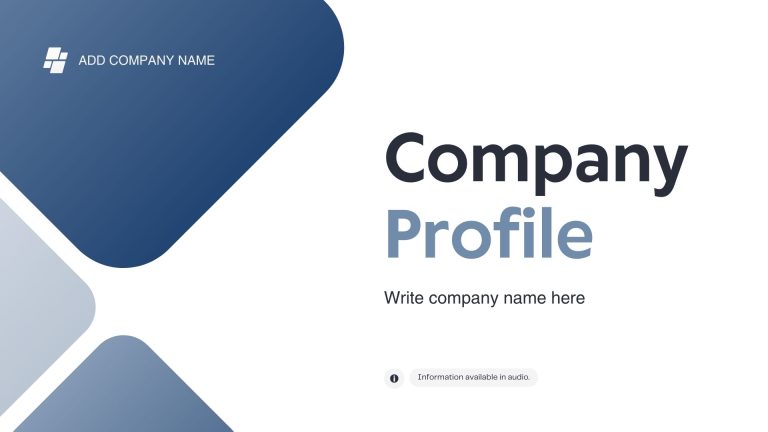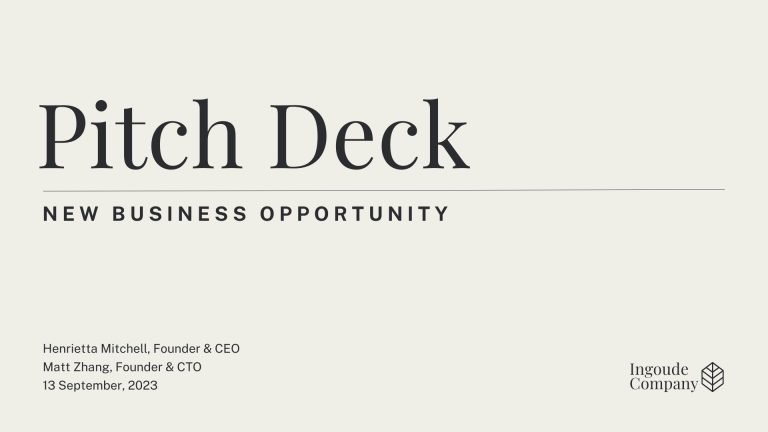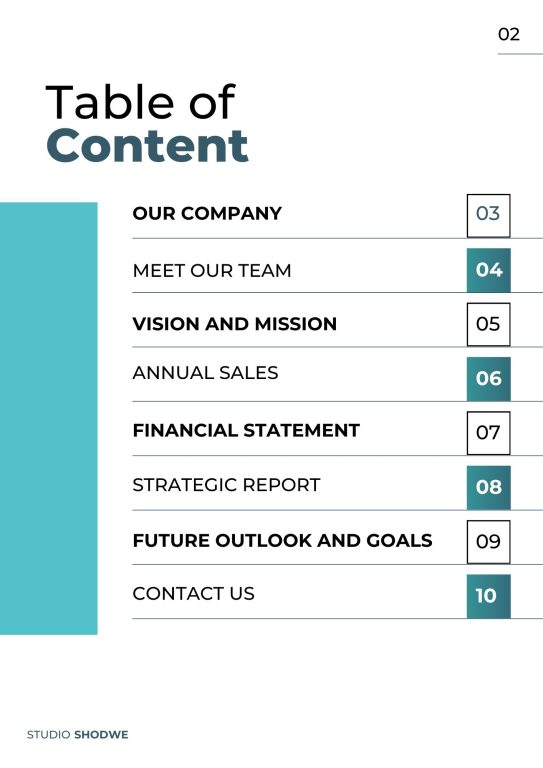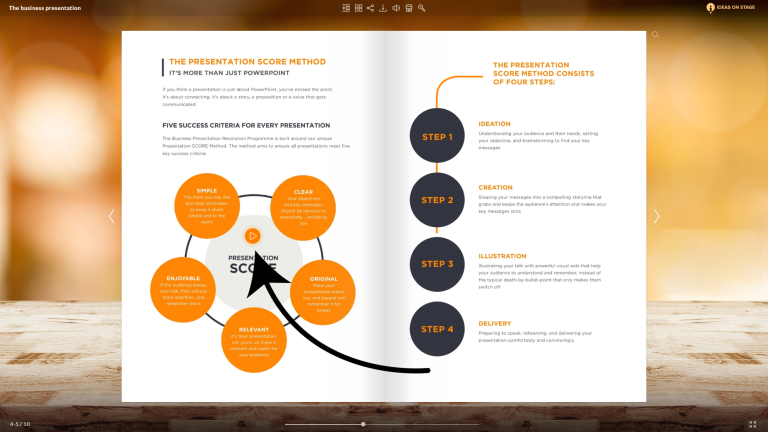How to Create an Effective Business Presentation Step-by-Step
Creating a business presentation is an important skill for sharing ideas and persuading others. Whether you’re presenting in a meeting or giving an online presentation, knowledge of how to organize and deliver your message is key.

Our guide will walk you through how to create a business presentation, the types you might create, and expert tips to make your presentation clear and effective.
What is a business presentation?
A business presentation is a formal communication method used to deliver information, ideas, or proposals to an audience. It can be used in various situations, such as meetings, conferences, or sales pitches.
The purpose of creating a business presentation is to inform, persuade, or support decisions by clearly presenting relevant information. It typically involves visual aids like slideshows, charts, and graphs to help illustrate points and engage the audience.
Types of business presentations
When creating a business presentation, it is important to understand the different types to better suit your needs. I have prepared a list of them below:
1. Informative business presentations
Informative business presentations focus on facts and data. They are often used for project updates, quarterly reviews, or training sessions.
Informative business presentation types:
![]() Annual Report
Annual Report
![]() Business Plan
Business Plan
![]() Marketing Plan
Marketing Plan
Clarity is the key to creating an effective informative presentation. It’s often best to use visuals like charts or graphs to make complex data easier to understand, and avoid overwhelming your audience with too much information; instead, focus on the most important points.
2. Persuasive business presentations
The purpose of persuasive business presentations is to convince the audience to adopt a particular viewpoint or take a specific action. These presentations often involve presenting a problem, offering a solution, and highlighting the benefits of a proposed solution.
Persuasive business presentation types:
![]() Pitch Deck
Pitch Deck
![]() Sales Presentation
Sales Presentation
![]() Company Presentation
Company Presentation
Storytelling and appealing to emotions are often key in persuasive business presentation because they help make your message more credible and convincing.
![]() Want to know more? Check our guide on mastering persuasive presentation!
Want to know more? Check our guide on mastering persuasive presentation!
3. Supporting business presentations
Supporting business presentations are used to provide additional information or evidence that supports the main presentation or proposal. They might include detailed reports, data analysis, or case studies that provide more specific insight.
Supporting business presentation types
![]() Management Report
Management Report
![]() Project Report
Project Report
The goal is to give the audience more context, or to answer potential questions they may have. These presentations are often more detailed and data-driven, to ensure that all the aspects are covered.
Steps to create a business presentation
Creating a business presentation involves several key steps:
1. Define the goal of your presentation
2. Know your audience
3. Gather your content
4. Create an outline
5. Design your presentation
6. Add visual elements
7. Practice your presentation
8. Prepare for questions
9. Finalize and review
10. Deliver your presentation
1. Define the goal of your presentation
First, you should clearly define the purpose of your presentation. What do you want your audience to take away from it?
As Chris Anderson advises in his book TED Talks: The Official TED Guide to Public Speaking, your presentation should center around one strong idea. This way, everything you say will support the main concept and make your presentation more powerful.
Determine what you want to achieve—whether it's to inform, persuade, or motivate your audience. Your objective will guide the content and structure of your presentation.
2. Know your audience
To create your business presentation effective, you need to understand who will be listening.
Knowing your audience helps you tailor your content with relevant information, examples, and visuals. For example, the way you present to your boss might be different from how you present to your coworkers.
No matter who your audience is, the goal is to make sure your message is clear and relevant, and engaging to them.
![]() Need help figuring out your target audience? Check out our helpful guide: how to find your target audience.
Need help figuring out your target audience? Check out our helpful guide: how to find your target audience.
3. Gather your content
Once you know your goal and your audience, gather and organize your content logically.
Start by collecting all the necessary information, data, and visuals that you plan to include. Ensure your content is accurate and up-to-date. Focus on the key points and details that directly support your main idea.
Organize your content in a logical flow that aligns with your presentation's objective. Use a mix of text, images, and data to make your points clear and engaging. For instance, charts and graphs can help illustrate complex data, while images can make your presentation more visually appealing.
4. Create an outline
Create an outline to structure your ideas, then build each section carefully, ensuring a smooth flow from one point to the next.
Start with an engaging introduction to grab your audience's attention. Follow with the main body where you present your key points in a clear, logical order. Use bullet points or brief headings to keep each section of your outline organized, clear, and easy to follow. End with a strong conclusion that reinforces your main message and leaves a lasting impression.
Remember, the goal is to present your information in a way that keeps your audience interested and emphasizes your key message. A well-structured outline helps make your business presentation more impactful and memorable.
5. Design your presentation
Design your slides based on the outline. Use a consistent layout, with a clear and readable font. As Prof. Garr Reynolds, the author of the Presentation Zen blog recommends, simplicity in design is key.
Keep your brand's colors, fonts, and logos consistent throughout. I believe this looks professional and also strengthens your brand identity.
Prof. Reynolds also suggests that clear, uncluttered visuals are more effective in communicating your message, so add charts, graphs, and images to illustrate your points. Be careful not to overwhelm your slides with too many of them.
To design your business presentation, I recommend tools like PowerPoint, Google Slides, or Canva. Canva offers a variety of templates to help you save time and ensure your design is consistent, and professional-looking. I have included examples of templates below.
![]() Want to make your business presentation interactive? Check our guide on how to create a flipbook with Canva.
Want to make your business presentation interactive? Check our guide on how to create a flipbook with Canva.
6. Add visual elements
Integrate multimedia elements, such as videos or animations, where appropriate to highlight key points and keep the audience engaged.
Dan Roam, in The Back of the Napkin, highlights the benefits of using simple drawings and diagrams to explain complex ideas. He suggests that visuals can make presentations more engaging and easier to understand.
To create such an interactive business presentation, consider using tools like Publuu to add multimedia features like embedded videos, animations, and other media.
This can make your message clearer and more compelling for your audience, but make sure that these elements are relevant and don’t distract from your main points.
TRY PUBLUU AND CREATE YOUR BUSINESS PRESENTATION NOW!
7. Practice your presentation
Practice your delivery to ensure you can present confidently and effectively.
Rehearse your presentation several times to get comfortable with the content and flow. Focus on timing, transitions between slides, and maintaining eye contact with the audience.
Practicing in front of a colleague, or mirror can help you get useful feedback and make any necessary adjustments. Pay attention to your body language and eye contact, as these can greatly impact how your message is received by your audience.
8. Prepare for questions
Think about the questions your audience might ask and prepare your answers. This will help you feel more confident during the Q&A session and ensure you can address any concerns that arise.
If possible, practice answering questions in a rehearsal Q&A to simulate real experience and refine your answers.
9. Finalize and review
Go through your presentation one last time to check for any areas that need improvement. Review your slides to make sure they are visually appealing with no spelling or grammatical mistakes.
Check that your content is clear and easy to understand, and verify that all multimedia elements work correctly. Make any necessary adjustments to enhance clarity and impact.
10. Deliver your presentation
Deliver your business presentation with confidence, keeping your goals and audience in mind. Engage with your listeners by making eye contact and be open to their reactions.
Test all equipment, including projectors, microphones, and any other technology you'll be using. This will help you avoid any technical issues during your presentation.
Expert tips for effective business presentations
Get the engaging opening
Start your presentation with something that grabs attention. For example, you can tell a story that relates to your main idea, like how a challenge in your industry was solved. This approach helps your audience connect with your message right away.
Asking an interesting question, such as "What if we could increase our efficiency by 50% without extra costs?" can also spark curiosity and get your audience engaged from the start.
Keep it simple
Focus on key points and avoid overloading slides with too much text or too many elements. Use clear and concise language. This ensures your presentation remains impactful.
Include multimedia
People are visual learners. Instead of relying on bullet points, use images, as Steve Jobs did, to make your message easier to understand. Use charts, graphs, and videos to support your points, but ensure they are relevant and not distracting.
For example, a powerful image or infographic can often explain your idea better and more effectively than a list of text.
Engage your audience
Encourage interaction by asking questions, starting discussions, or using polls. This keeps your audience involved. Make eye contact and maintain an energetic tone to hold their attention.
Tell a story
As Carmine Gallo explains in his book Talk Like TED, stories can help engage the audience and create an emotional connection. As audiences often connect better with content they can relate to, look for ways to include stories or anecdotes that refer to your topic.
![]() Stories are how we remember; we tend to forget lists and bullet points.
Stories are how we remember; we tend to forget lists and bullet points. ![]()
Source: Harvard Business Review
The Harvard Business Review article also discusses how storytelling in business can persuade people and appeal to emotions, so can you share real-life experiences that highlight your main points?
“Less is more”
Use fewer slides and keep them simple with less text to make your message clear and powerful. For example, instead of 20 slides filled with text, aim for 10 slides that use visuals and short statements. This approach makes your presentation easier to follow and more likely to leave an impact on your audience.
End strong
Finish your presentation with a powerful conclusion or call to action that reinforces your key message. For instance, after summarizing your presentation, you might say, "Together, we can achieve 30% growth in the next quarter—let's make it happen." This approach leaves a lasting impression and motivates your audience to take action.
Be authentic
Authenticity is crucial in building trust and helps create a connection with the audience and makes the presentation more relatable.
Business presentation templates
Company profile presentation template

Business project presentation template

Pitch deck presentation template

Annual report presentation template


Business presentation example
Business presentation FAQs
Why are business presentations important?
Business presentations are important because they help effectively communicate ideas, share information, persuade audiences, and support decision-making processes.
They are often used to explain strategies, report progress, or convince an audience to take specific actions. A well-prepared presentation can clarify complex ideas, build credibility, and inspire action, helping you achieve your goals effectively.
What should be in a business presentation?
A business presentation should include a clear objective, relevant content, visuals like charts or graphs, and a strong conclusion. It's also important to have a logical flow, engage the audience, and be prepared to answer questions.
What is the most popular type of business presentation?
The most popular type of business presentation is the sales presentation or pitch deck. These are commonly used to convince potential clients or investors to buy products, services, or invest in a company.
Conclusion
Creating a business presentation is a crucial skill for effectively sharing ideas and persuading others. To make your presentation successful, focus on organizing your content, designing clear visuals, and engaging your audience. Simple, well-structured slides and strong storytelling will help you deliver your message in a way that resonates.
Remember, a good presentation is not just about information—it's about making a connection. By being authentic, keeping your content focused, and practicing thoroughly, you can deliver a presentation that leaves a lasting impact and motivates your audience to take action.
You may be also interested in:
Best Presentation Apps for 2026
10 Stunning Mood Board Examples That Inspire

